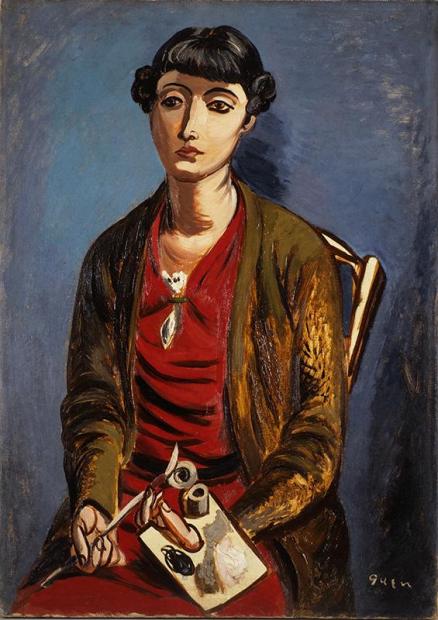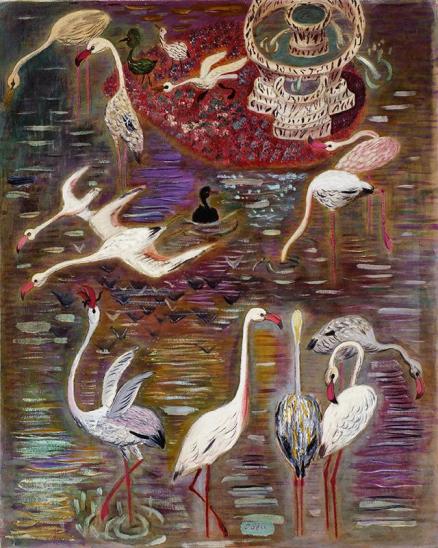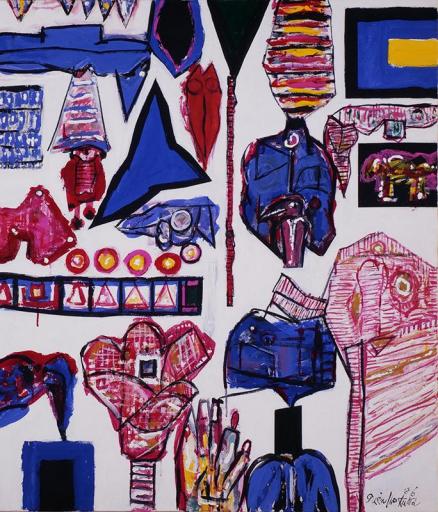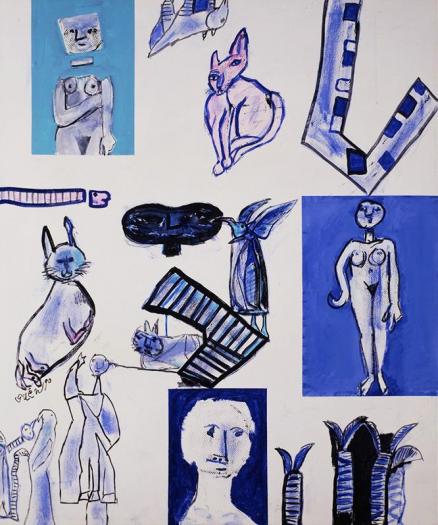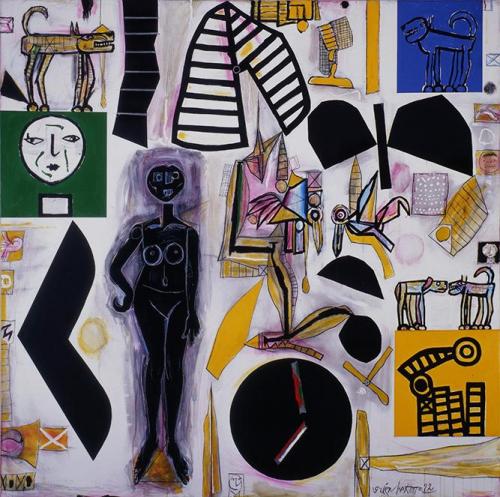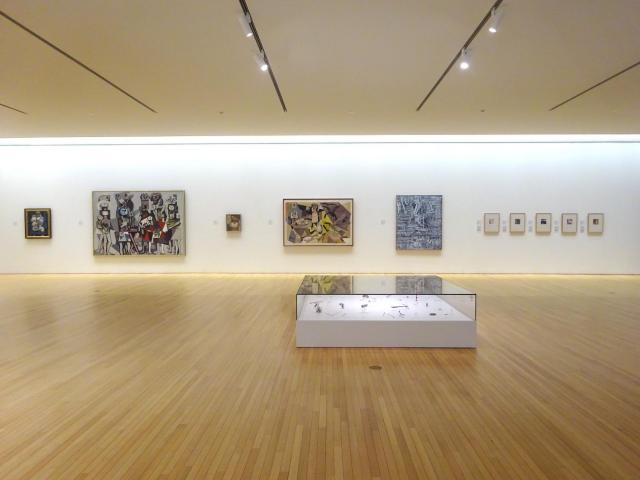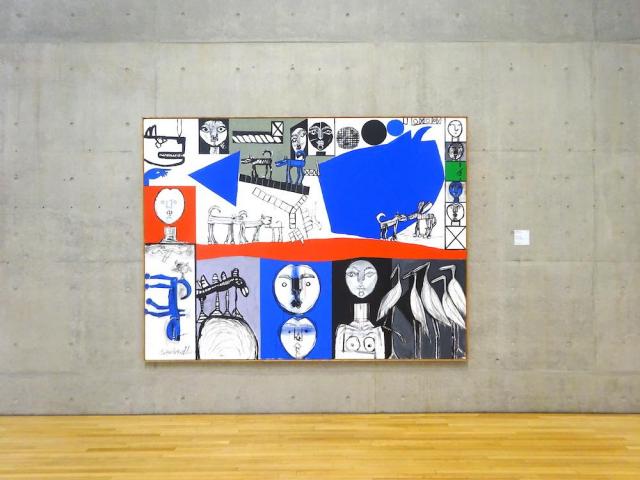1. Genichiro Inokuma, Woman with a Palette, 1931
2. Genichiro Inokuma, Flamingos' Paradise, 1938
3. Genichiro Inokuma, Cats on the Table, 1952
4. Genichiro Inokuma, Parade of Shapes, 1986
5. Genichiro Inokuma, Strange Meeting, 1990
6. Genichiro Inokuma, 3 Black Horses, 1991
7-9. Gallery A
10-12. Gallery B
All: Collection of Marugame Genichiro-Inokuma Museum of Contemporary Art ©The MIMOCA Foundation
Genichiro Inokuma: People and Animals and Objects Genichiro Inokuma: People and Animals and Objects
Date: Sun. 30 June 2024 - Mon. 23 September 2024
Closed: Mondays (except 1, 15 July, 5, 12, August, 2, 16, 23, September), Tue. 16 July, Tue. 13 August, Tue. 17 September
Hours: 10:00-18:00 (Admission until 30 minutes before closing time)
Organized by Marugame Genichiro-Inokuma Museum of Contemporary Art, The MIMOCA Foundation
Admission: Adults ¥300, Students (college, university) ¥200, Children (0 year to high school) free
All manner of people and animals and objects residing within me are lined up waiting, eager to be painted. *
The paintings of Genichiro Inokuma (1902–1993) contain a plethora of motifs, starting with people, animals, and other things living and inanimate, all on display in this exhibition encompassing Inokuma’s output from early period, to final years.
From his student days at the Tokyo Fine Arts School (now Tokyo University of the Arts) through his Paris years, Inokuma painted human figures often, though animals feature frequently too. From around 1950, cats join people as a significant motif. Free-spirited felines with their nonchalant disregard for human convenience made a seductive subject for an artist who at times lived with as many as ten of them.
Following his relocation to New York in 1955 Inokuma’s works on canvas grew more abstract in style, however his covers for the magazine Shosetsu Shincho depicted clearly the city’s inhabitants, plus dogs, horses, and other creatures that live alongside humans. Then from 1975 onward, as he split his time between Tokyo and Honolulu, Inokuma’s canvases were dominated by flora and fauna, or bizarre mechanical forms. His final years were marked by a return to the figurative, with people plus creatures such as birds, cats, and dogs sharing the picture plane with other motifs.
Throughout his life Genichiro Inokuma turned his gaze to “all manner of people and animals and objects,” portraying them with great richness of expression. Paintings in which all motifs live and breathe equally show how we too can turn our gaze to the myriad entities, living and otherwise, that share our planet.
*Genichiro Inokuma, “When one goes beyond conventional wisdom,” Guén Inokuma, Mitsukoshi, 1990.
- Self-portrait, 1924, Oil on board, 22.7×15.4
- Woman with a Palette, 1931, Oil on canvas, 90.8×65.3
- Night, 1937, Oil on canvas, 197.5×289.5
- Flamingos' Paradise, 1938, Oil on canvas, 80.5×64.5
- Child Selling Garlic, 1938, Oil on canvas,91.5×53.4
- Old Woman in Paris, 1938, Oil on canvas, 72.0×60.0
- Family in the Car, 1938, Oil on canvas, 73.0×60.0
- Horse and Woman,1940, Oil on canvas, 72.0×60.0
- Children at Changjiangbu, 1941, Oil on canvas, 130.5×194
- Cats on the Table, 1952, Oil on canvas, 73×61
- Song for Cats, 1952, Oil on canvas, 181.5×259
- Cat on the Head, 1952, Oil on canvas, 45.5×37.8
- Crows, 1953, Oil on canvas, 130×194
- Lively Street, 1964, Oil on canvas, 152.6×127.5
- “Dog and City” for Shosetsu Shincho February 1960 Issue, 1960, watercolor on paper, 15.0×14.7
- “The Antique Shop” for Shosetsu Shincho March 1962 Issue, 1962, watercolor on paper, 15.0×14.7
- “Two Little Fish” for Shosetsu Shincho March 1965 Issue, 1965, watercolor on paper, 15.5×14.7
- “Horse in July” for Shosetsu Shincho July 1966 Issue, 1966, watercolor on paper, 15.0×14.7
- “Buggy” for Shosetsu Shincho July 1969 Issue, 1969, watercolor on paper, 15.0×14.7
- Landscape, 1972, Acrylic on canvas, 178×202.5
- Village of Circles, 1977, Acrylic on canvas, 115.9×89.8
- Limitation of Space Creatures, 1982, Acrylic on canvas, 116.7×91
- Living Creatures in the Weightlessness Zone , 1983, Acrylic on canvas, 234.5×122
- Parade of Shapes, 1986, Acrylic on canvas, 111.8×96
- 43 Faces, 1988, Acrylic on canvas, 121.4×101.5
- Two Venuses, 1989, Acrylic on canvas, 130.4×97
- Strange Meeting, 1990, Acrylic on canvas, 121.5×101
- Robot, Face, Dogs , 1992, Acrylic on canvas, 194.0×194.0
- 3 Black Horses, 1991, Acrylic on canvas, 122.0×101.0
- Birds Dogs Faces Neighbors, 1992, Acrylic on canvas, 194.0×130.0
- Reclining Nude 4 Faces 10 Birds, 1991, Acrylic on canvas, 127.0×96.0
- Faces Dogs Birds, 1991, Acrylic on canvas, 194.0×259.0
1. Genichiro Inokuma, Woman with a Palette, 1931
2. Genichiro Inokuma, Flamingos' Paradise, 1938
3. Genichiro Inokuma, Cats on the Table, 1952
4. Genichiro Inokuma, Parade of Shapes, 1986
5. Genichiro Inokuma, Strange Meeting, 1990
6. Genichiro Inokuma, 3 Black Horses, 1991
7-9. Gallery A
10-12. Gallery B
All: Collection of Marugame Genichiro-Inokuma Museum of Contemporary Art ©The MIMOCA Foundation
